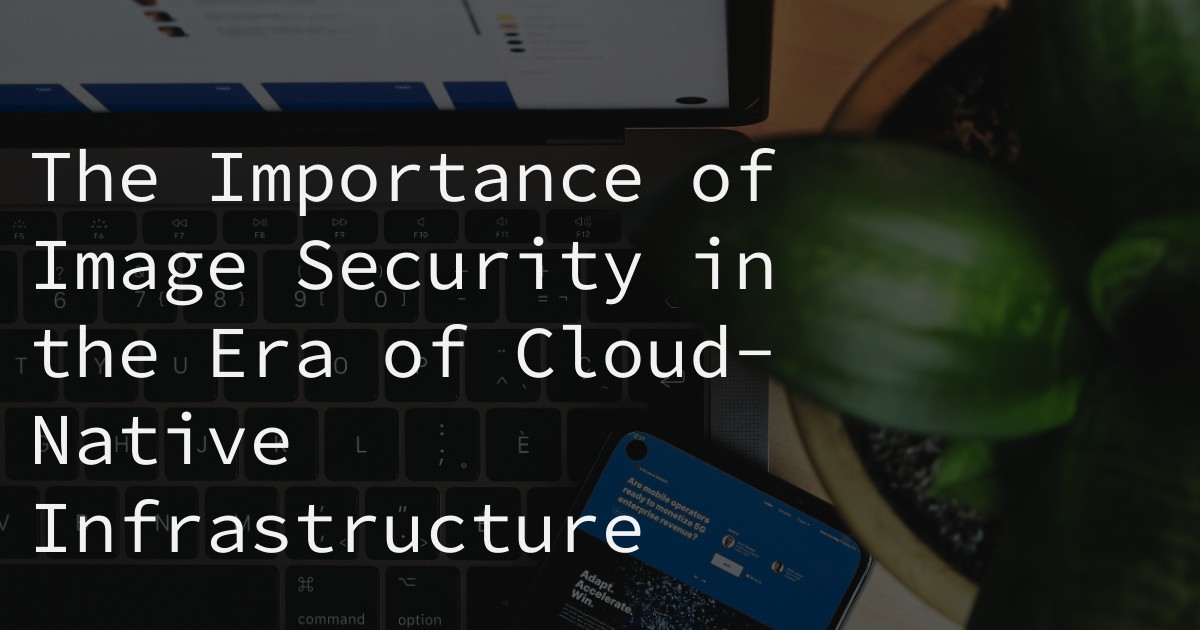
13 Nov The Importance of Image Security in the Era of Cloud-Native Infrastructure
Cloud-native infrastructure has become increasingly popular in recent years, with more and more organizations adopting this modern approach to building and deploying applications. As a SEO and Cloud Computing expert, I have seen firsthand the benefits of this approach, including increased scalability, flexibility, and cost-effectiveness. However, with this shift towards cloud-native infrastructure, there is also a growing need for robust security measures, particularly when it comes to image security. In this article, we will explore the importance of image security in a cloud-native environment and discuss the key considerations, challenges, and solutions for securing images in a dynamic and distributed infrastructure.
Introduction
Cloud-native infrastructure is a term used to describe the use of cloud computing technologies and principles to build and deploy applications. This approach involves breaking down applications into smaller, more manageable components, known as microservices, and deploying them in containers. These containers are then orchestrated by tools like Kubernetes and Docker, allowing for a more efficient and scalable deployment process.
With the rise of cloud-native infrastructure, there is a growing need for organizations to prioritize image security. In this article, we will delve into the importance of image security in a cloud-native environment and discuss the key considerations, challenges, and solutions for securing images in a dynamic and distributed infrastructure.
Understanding Image Security in a Cloud-Native Environment
Image security refers to the protection of container images, which are used to package and deploy applications in a cloud-native environment. These images contain all the necessary code, libraries, and dependencies required to run an application, making them a prime target for cyber attacks. In a traditional setup, security measures are typically focused on the host or server, but in a cloud-native environment, the focus shifts to securing the images themselves.
Compared to traditional security methods, image security in a cloud-native environment requires a different approach. In a dynamic and distributed infrastructure, where containers are constantly being created, destroyed, and moved, traditional security measures are not enough. Instead, organizations need to adopt a more proactive and comprehensive approach to image security.
Some key considerations for image security in a cloud-native environment include:
- The need for continuous monitoring and scanning of images for vulnerabilities
- The importance of securing images at every stage of the deployment process
- The need for automation to ensure consistent and robust image security
Image Security in a Cloud-Native Environment
Image security is crucial for the overall security of a cloud-native setup. In a dynamic and distributed infrastructure, where containers are constantly being created and destroyed, any vulnerabilities in the images can have a significant impact on the entire infrastructure. A single compromised image can lead to a chain reaction, compromising the security of the entire system.
Furthermore, with the increasing use of third-party images and the use of open-source software, the risk of image vulnerabilities is even higher. This makes it essential for organizations to prioritize image security and ensure that all components in a cloud-native environment are adequately secured.
Benefits of Prioritizing Image Security in a Cloud-Native Setup
By prioritizing image security in a cloud-native setup, organizations can reap several benefits, including:
- Improved overall security of the infrastructure
- Reduction in security risks and potential breaches
- Enhanced compliance with industry regulations and standards
By ensuring that images are secure, organizations can also build trust with their customers and protect their reputation.
ALSO READ
Challenges and Solutions for Securing Images in a Dynamic and Distributed Infrastructure
Securing images in a dynamic and distributed infrastructure comes with its own set of challenges. Some of the common challenges include:
- The constantly changing nature of the environment, making it difficult to keep track of all images
- The use of third-party images and open-source software, which may contain vulnerabilities
- The need for consistent and timely updates to address any new vulnerabilities
To overcome these challenges, organizations can adopt various techniques, such as:
- Implementing a continuous monitoring and scanning process for images
- Using image signing and verification to ensure the authenticity of images
- Implementing a robust patch management process to address any vulnerabilities
Automation also plays a crucial role in ensuring consistent and robust image security. By automating the scanning, testing, and deployment of images, organizations can reduce the risk of human error and ensure that all images are secure before being deployed.
Future Trends in Cloud-Native Image Security
As technology continues to evolve, so does the landscape of image security in a cloud-native environment. Some of the future trends in this space include:
- Advancements in image security tools and technologies, such as image scanning and vulnerability management tools
- The integration of security into the cloud-native development lifecycle, known as DevSecOps
- The use of emerging technologies like AI and machine learning to enhance image security
These advancements will help organizations stay ahead of potential threats and ensure that their images are secure at all times.
ALSO READ
Conclusion
In conclusion, image security is a crucial aspect of cloud-native security. As organizations continue to adopt cloud-native infrastructure, it is essential to prioritize image security to protect the entire infrastructure from potential vulnerabilities and cyber attacks. By understanding the key considerations, challenges, and solutions for securing images in a dynamic and distributed environment, organizations can ensure the overall security and compliance of their cloud-native setup.
RELATED ARTICLES:



Sorry, the comment form is closed at this time.